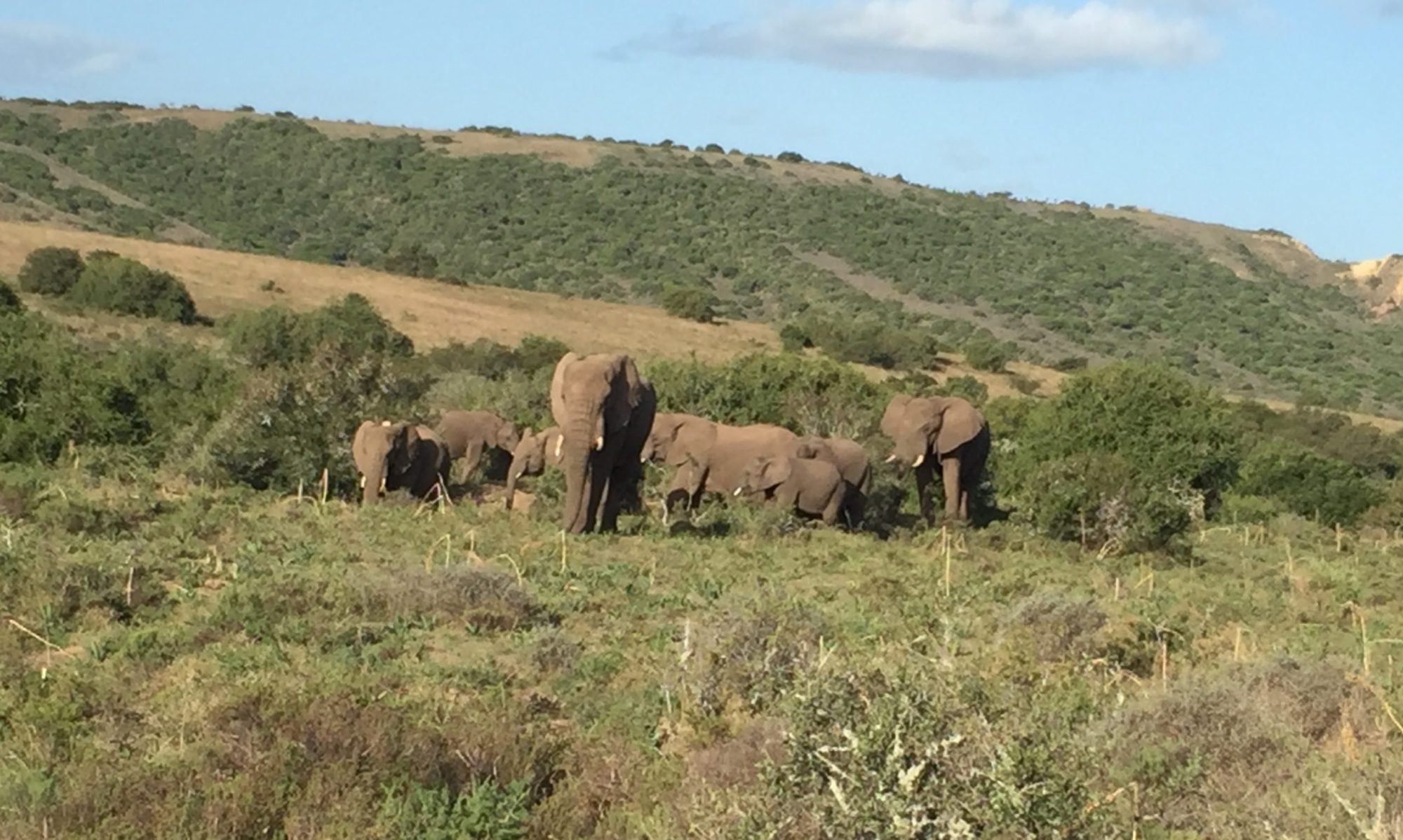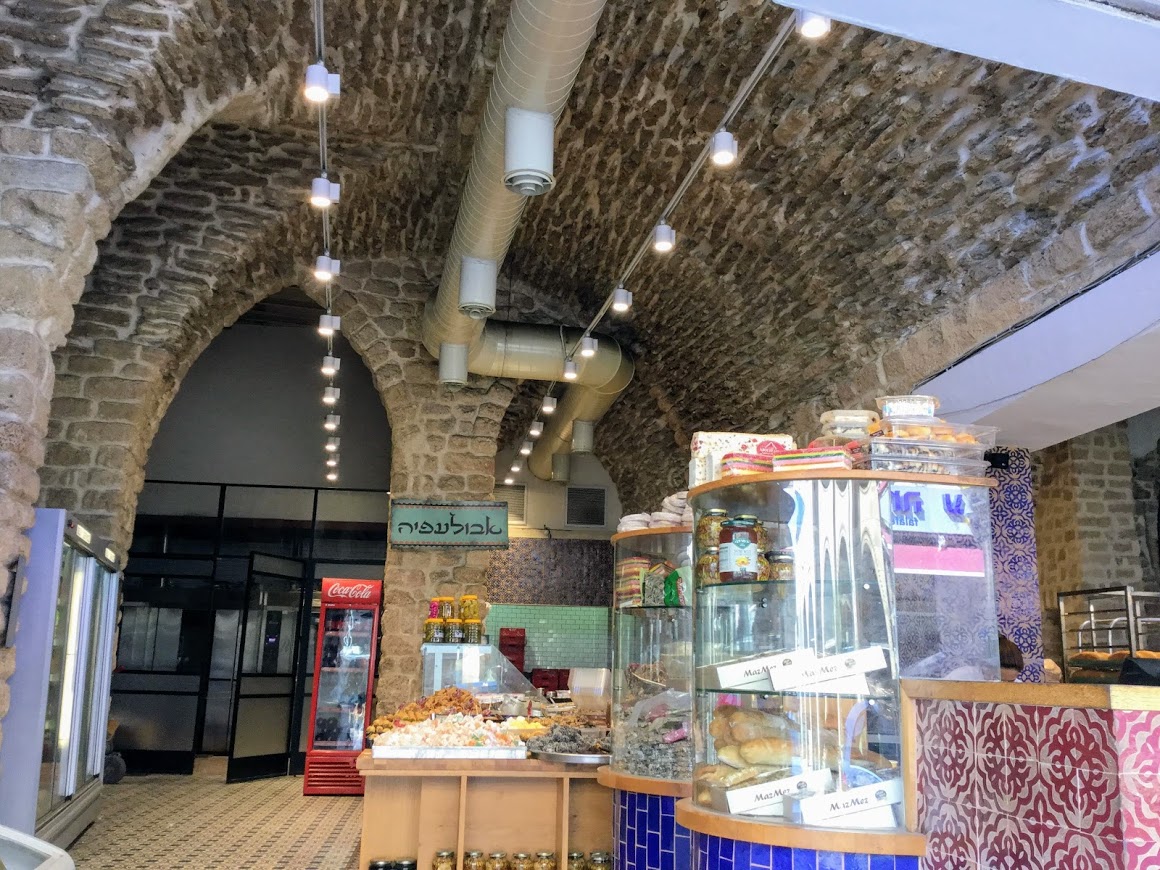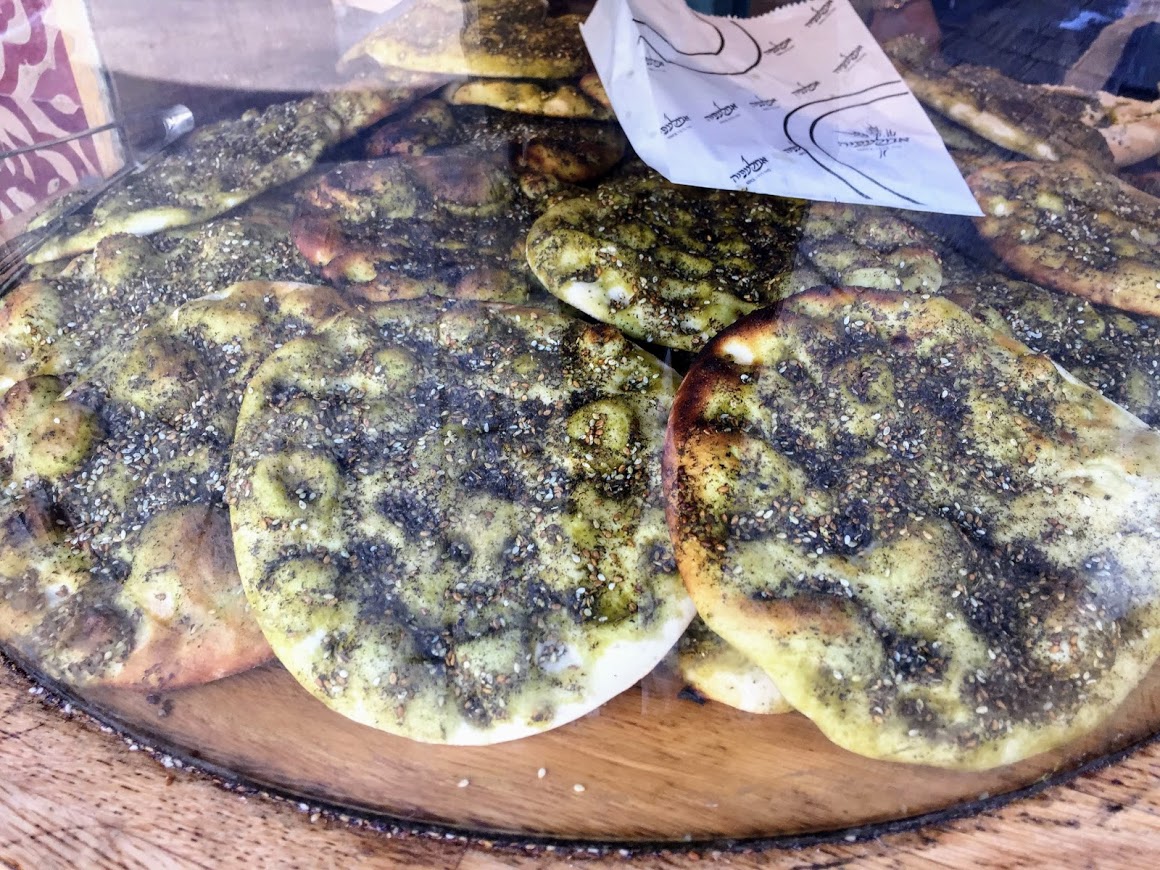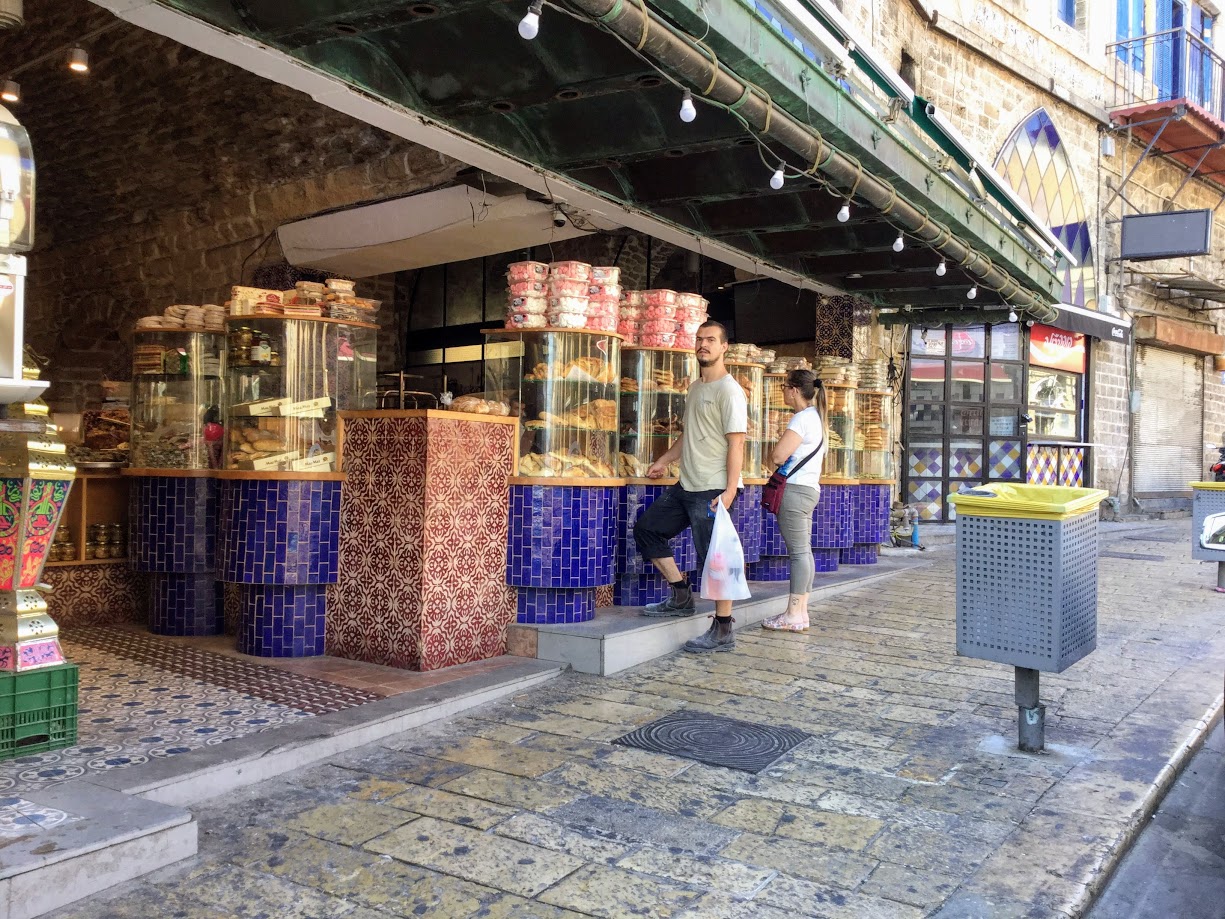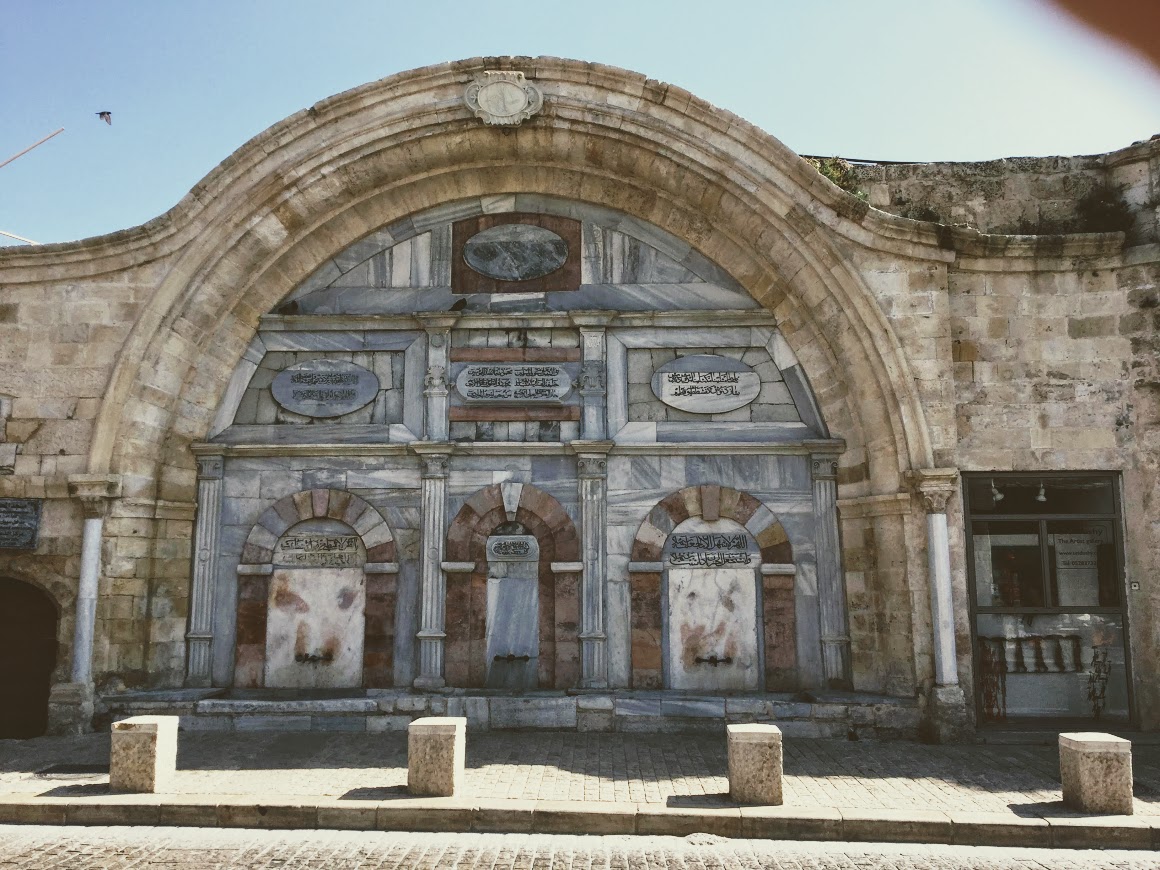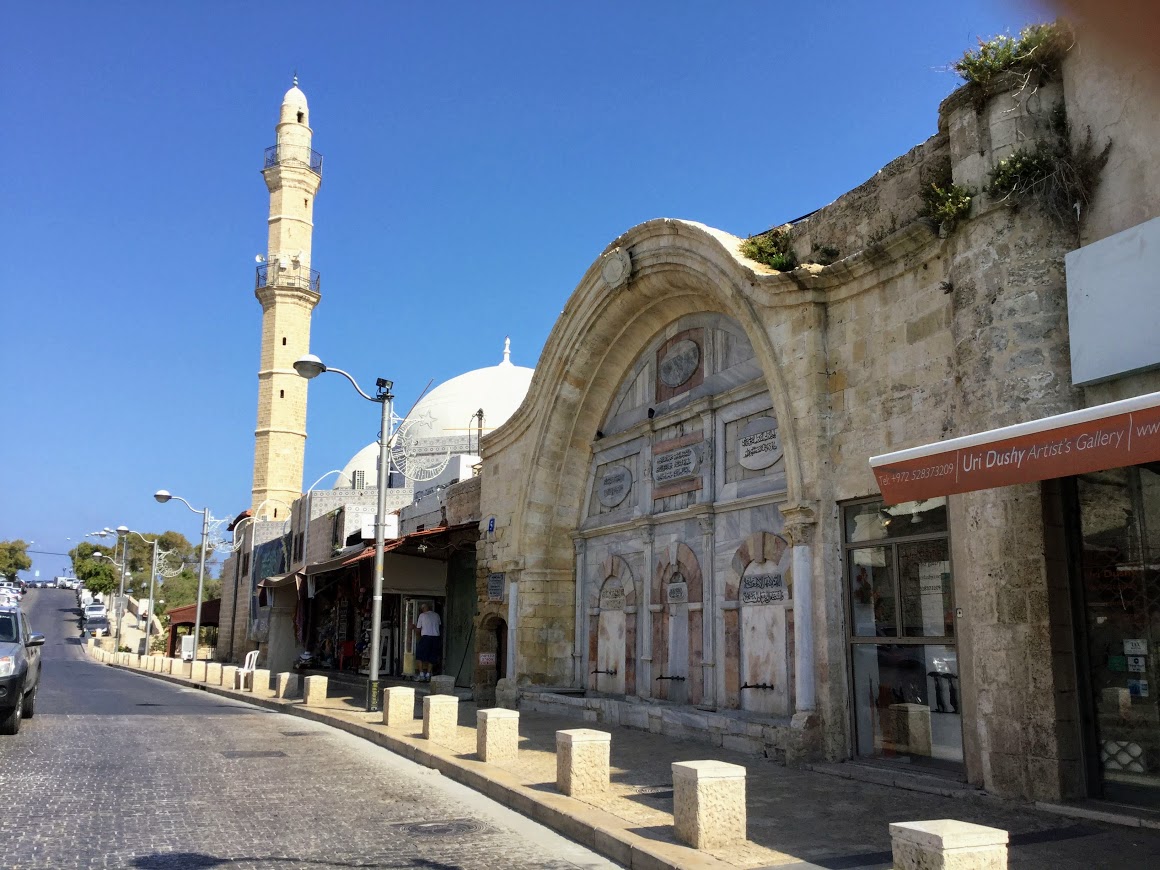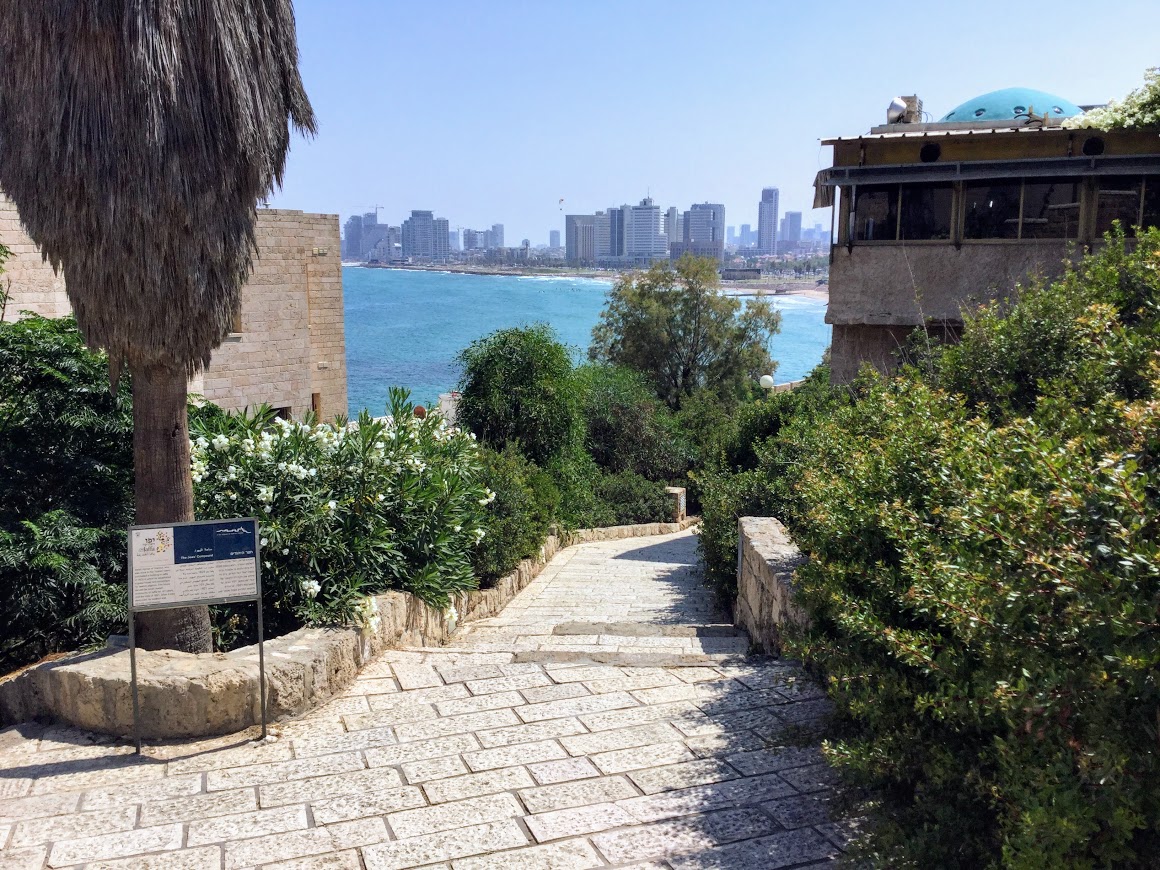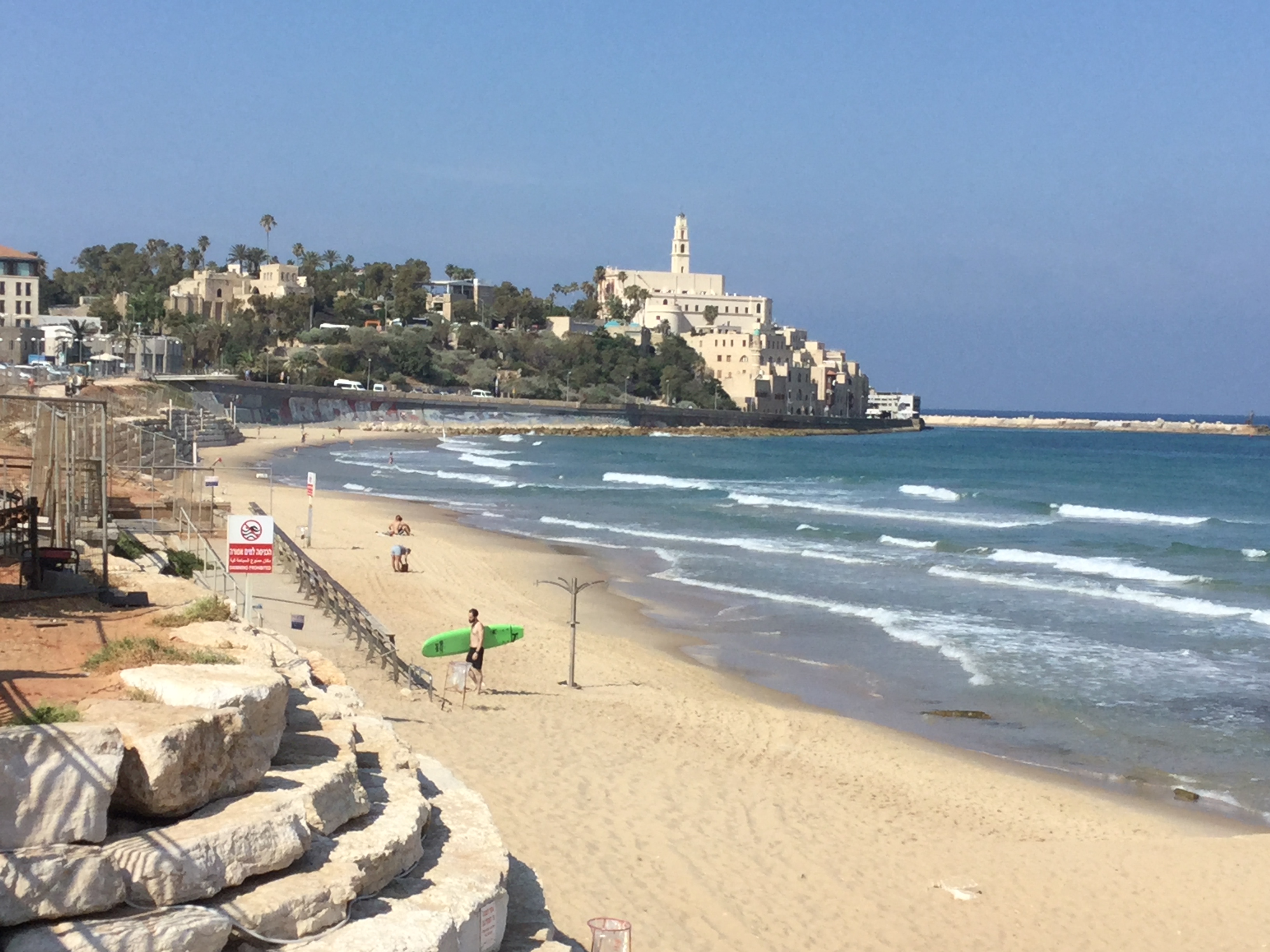
Old Jaffa is a fascinating place – it has been built, conquered, destroyed, and re-built several times and is one of the oldest port cities. Today it is part of Jaffa, old and new, and a great place to hang out. This self guided walking tour of Old Jaffa is easy, accessible and well we had loads of fun!
For centuries Old Jaffa was the maritime gateway to Israel and Jerusalem – almost everyone who was anyone was here:-
The Prophet Jonah; The Egyptians; The Philistines; The Hasmoneans; The Romans; The Maccabees; The Muslims; The Crusaders; The Turks; The French; The British and of course The Israelis; Napoleon; Herzl; William II of Germany; Eichmann and yours truly.
Greek Mythology, Astrology and Tel Aviv’s own Robin Hood have also all been here!
The points of interest on the following self guided walking tour of Old Jaffa, which I did with a group of family and friends of all ages, are marked on the map.
Tel Aviv-Yafo, Israel
Tel Aviv-Yafo, Israel
Tel Aviv-Yafo, Israel
Tel Aviv-Yafo, Israel
תל אביב יפו, Israel
Tel Aviv-Yafo, Israel
Tel Aviv-Yafo, Israel
Tel Aviv-Yafo, Israel
Tel Aviv-Yafo, 61030, Israel
Tel Aviv-Yafo, Israel
1. clock square
In the middle of the Clock Square stands the Clock Tower built in the beginning of the 20th Century to honor the 25th year of rule of the Turkish Sultan Avad Alchamid the Second. During the Ottoman Rule , Old Jaffa began to develop and expand outside its walls. Consequently the Clock Square, which is outside the walls of Old Jaffa, served as the central point where all traffic converged. Originally on the top of the Clock Tower there were 4 clocks, two displaying Jaffa time and two displaying European time.
The story goes that the only person in the area at the time who had a pocket watch was Joseph Moyal. People used to come to him all the time asking what the time was so that they wouldn’t miss the train – the train station was just down the way at The Tachana. Moyal got sick and tired of people asking him what the time was so he donated the money to install the clocks on the Tower.
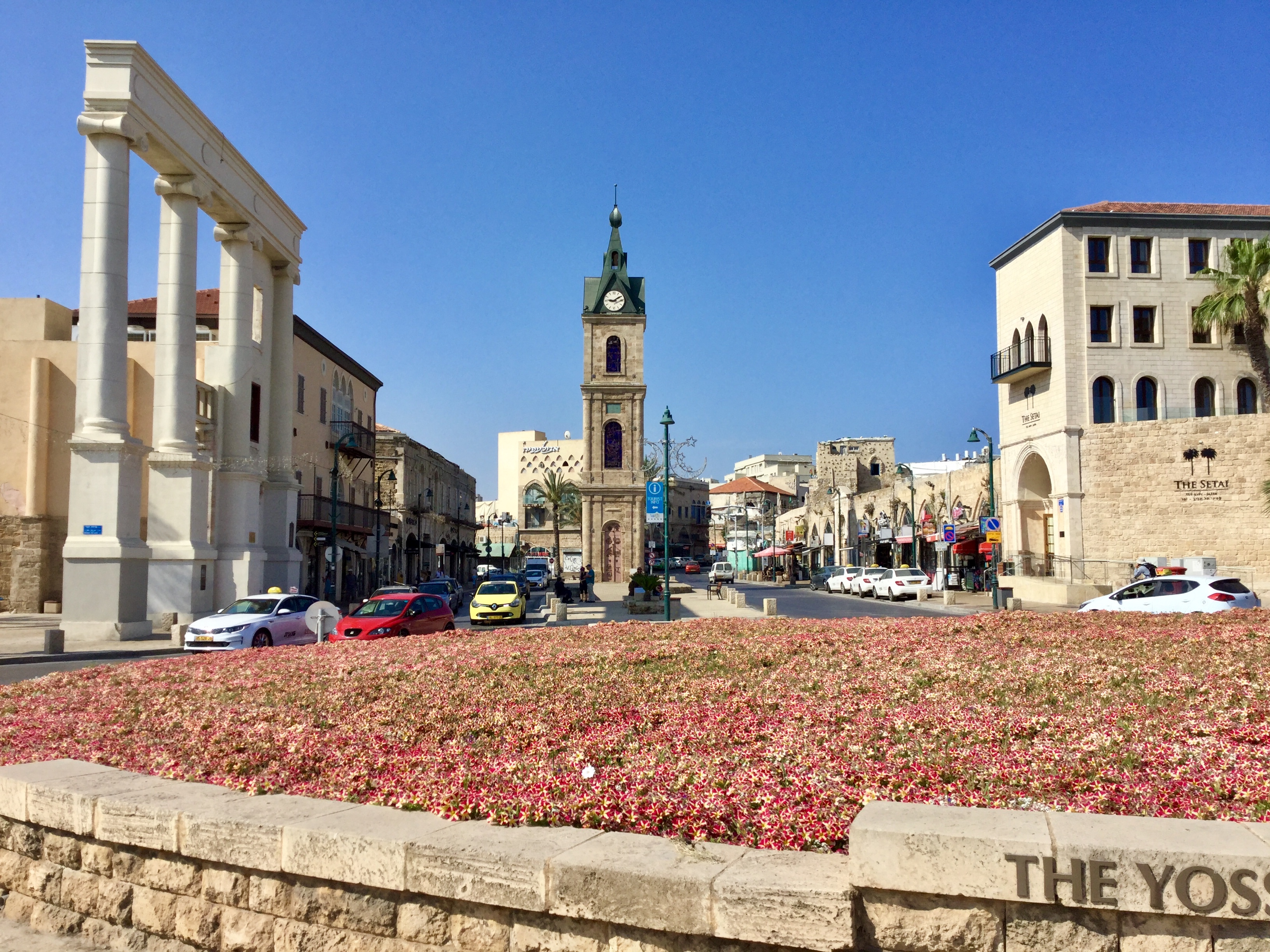
Opposite the Clock Tower on the West towards the sea is an upscale hotel just recently opened. This used to be the Old Police Station which also served as a prison. After Adolf Eichman was captured and brought to Israel he was imprisoned here for a couple of months.
Take note of the two red post boxes on the side of the newly built Hotel – remnants of the British presence here.
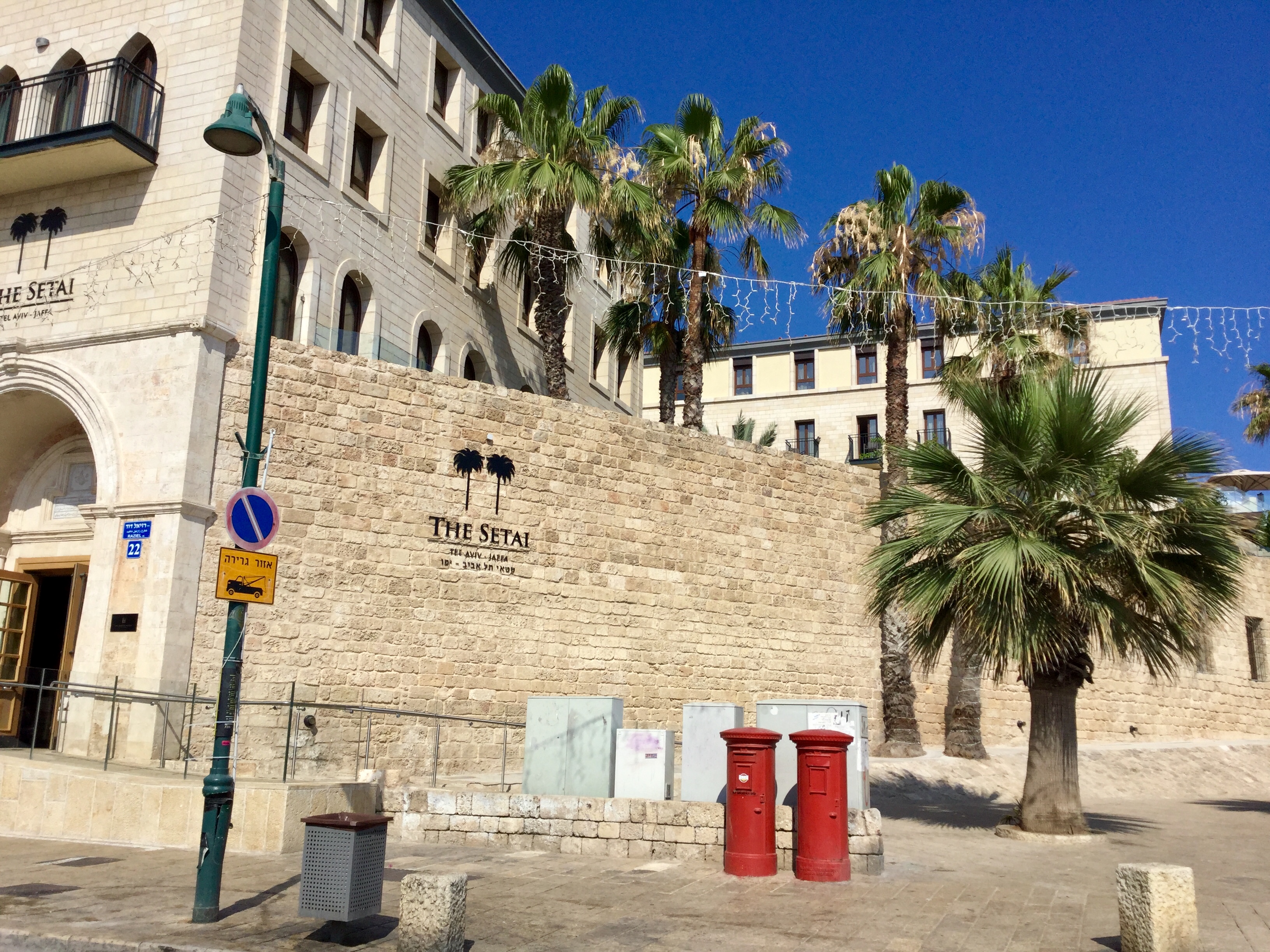
Directly opposite the Clock Tower if you are facing west, the sea, there is a row of shops. More or less in the middle of these shops you will see an ornate arch. This served as the entrance to the Mahmudi Mosque (which you will see later on) and was used only by the Ottoman Rulers so that they wouldn’t have to mingle with the masses upon entering the mosque.
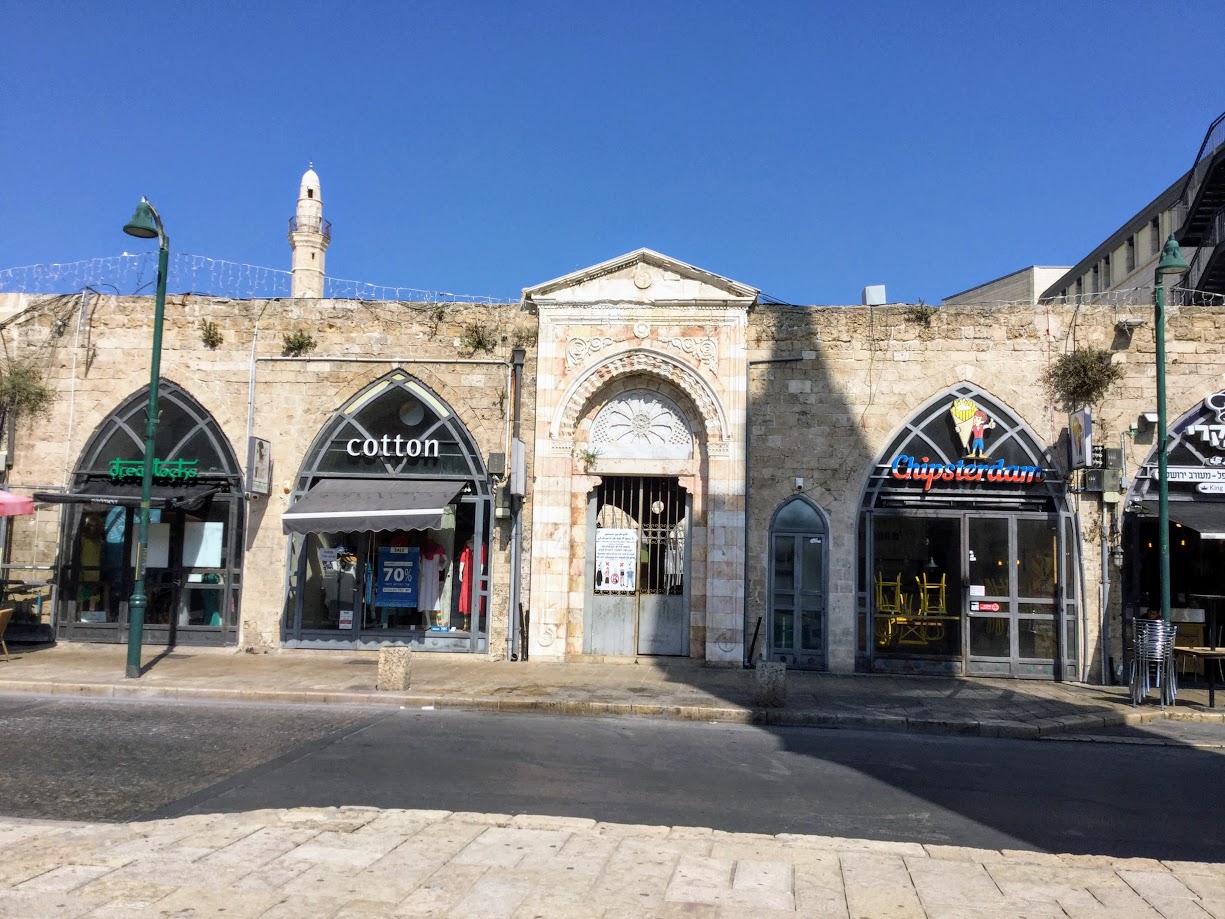
Opposite the Clock Tower on the East side is a monumental facade with four big columns. These are reconstructed on the site where the Turkish Government House and Residence once stood when these were taken out of the walled city of Old Jaffa.
2. aboulafia bakery- rifka & shlomo aboulafia
A little bit further up on Yefet Street on the left you will see the famous Aboulafia Bakery. Try their pita* with za’atar* – but make sure they warm it up!
The story about Rifka & Shlomo Aboulafia and their connection to the Aboulafia Bakery is charming, typical of many stories about this country and one which illustrates so much about Israel and the people who inhabit her.
The first of the Aboulafias came to Israel after the expulsion of the Jews from Spain in the 16th Cent. Shlomo Abulafia (1865-1909) was an Arab and French teacher who fell in love with one of his students, Rebecca Fryman. They got married, joined the Achuzat Bayit association and in 1907 were part of the first founders of Neve Tzedek – the beginning of Tel-Aviv. Shlomo and Rifka hired a young Arab man to work for them who with time became very close to the family. After Shlomo’s death it was frowned upon that Rifka continued to employ an Arab man in her home. Before leaving Rifka’s employment the young Arab worker asked if he could adopt the family name. He did and later opened a little bakery in Jaffa called Abulafia Bakery which today is an iconic chain of bakeries.
3. Mahmudai Mosque
After buying your pita with za’atar for the walk, walk back in the direction of the Clock Square and then turn left into the first street – Ruslan Street. Opposite you on the right hand side stands the Mahmudai Mosque. Take note of the public water fountain in the front which was used for passers by and the donkeys. It is called Saville Suliman – Saville meaning water. On the top there is an insertion in Arabic honoring the Sultan. Here was and still is the main entrance to the Mosque.
3. Jerusalem Gate
Opposite the Saville Suliman is a small lane with an arch on the top. This was the main entrance Gate of the walled city of Old Jaffa. The gate was named The Jerusalem Gate as it served as the exit to Jerusalem. In the old city of Jerusalem one of the main gates is the Jaffa Gate so named for the same reason. As you will see it is a winding curvy entrance to the Old City of Jaffa the idea being to force the horses, particularly those ridden by conquering enemies, to slow down and so hamper the oncoming attack.
4. arab-hebrew theater
Continue up Mifratz Shlomo Promenade until on your left you will see The Arab-Hebrew Theater and further back The Old Jaffa Museum. The museum display findings from excavations in the area dating back to 6000 BCE. The snag though is that it is open only by appointment! Before Old Jaffa extended out of its’ walls this complex served as the House of Government and the Prison. After these buildings were moved to outside of the city walls (to the area of the Clock Square) the building served as a soap factory – part of it today now serves as a home to bats!
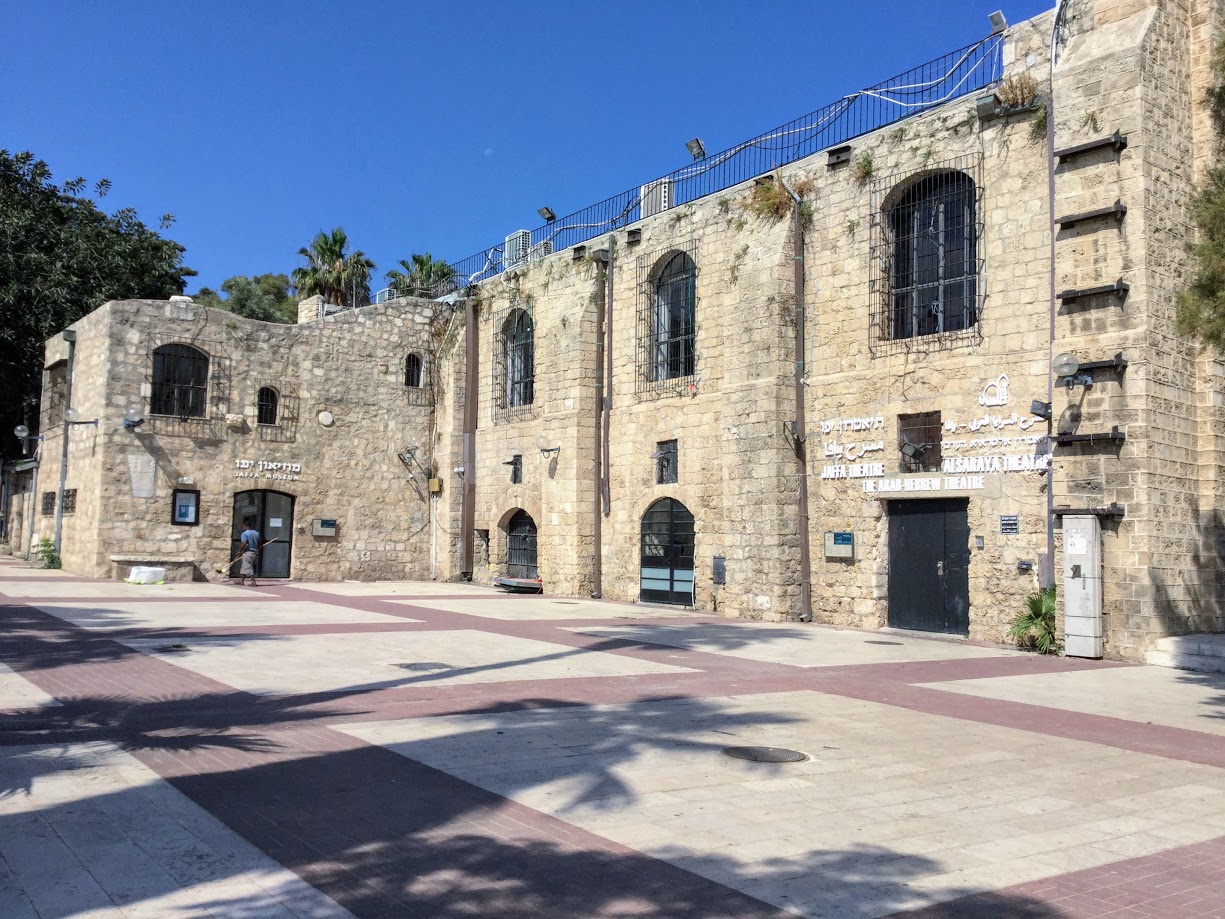
6. Andromeda
Continue walking along Mifratz Shlomo Promenade until you get to Beit Andromeda which will be on your left. Once you reach Beit Andromeda ( a great venue for weddings etc) stop and marvel at the view.
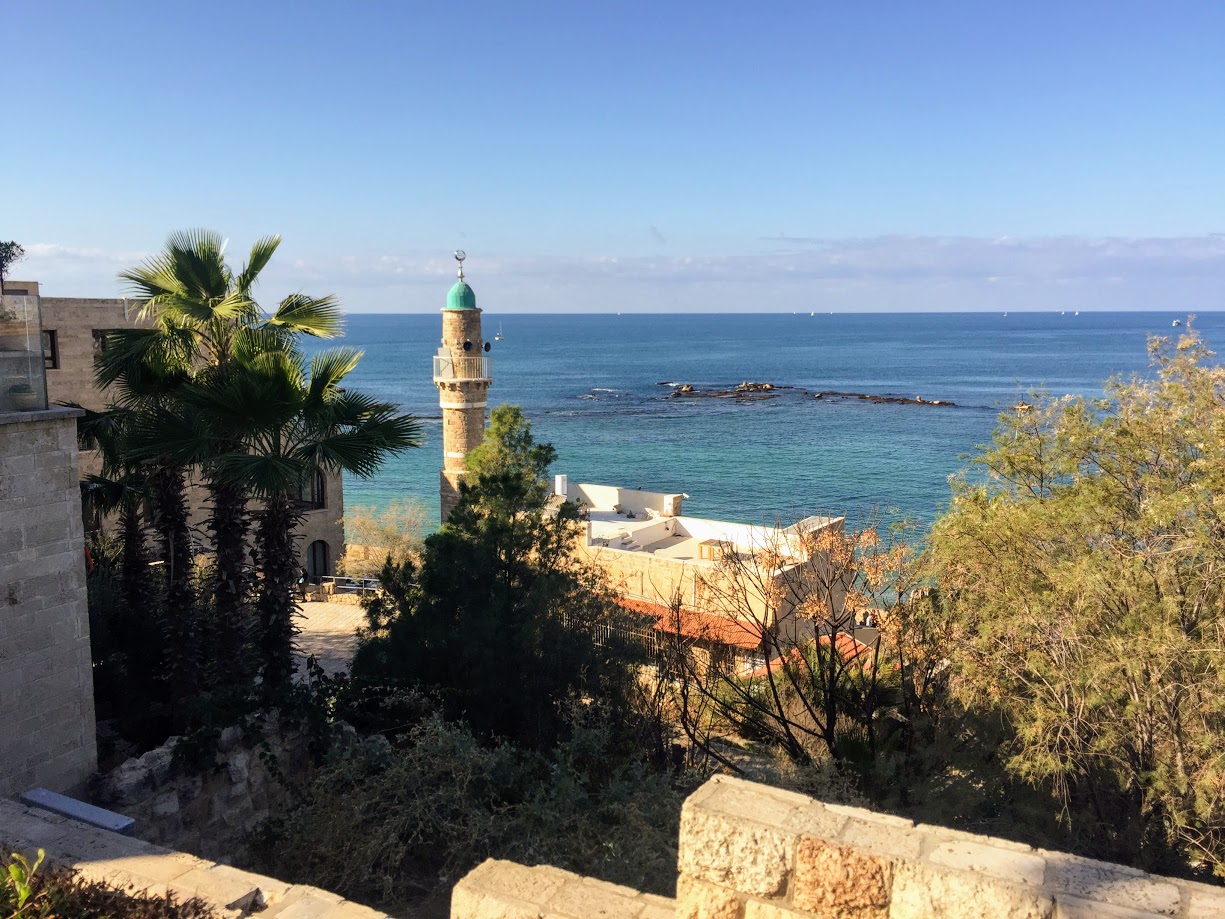
Look at the collection of rocks in the sea. This is where we meet Greek Mythology. Here there are two conflicting stories. The first tells of how Old Jaffa was attacked by a sea monster. King Cepheus and his wife Queen Cassiopeia agreed to save the city by sacrificing their daughter Andromeda who was tied to the rocks in the sea that you are now presumably looking at. The second story tells that Cassiopeia was punished for boasting how beautiful her daughter was and hence Andromeda was chained to the rocks. In both accounts, Perseus arrives to save Andromeda – in the first story he kills the sea monster – and in both stories, saves and marries Andromeda.
7. St. Peter’s church
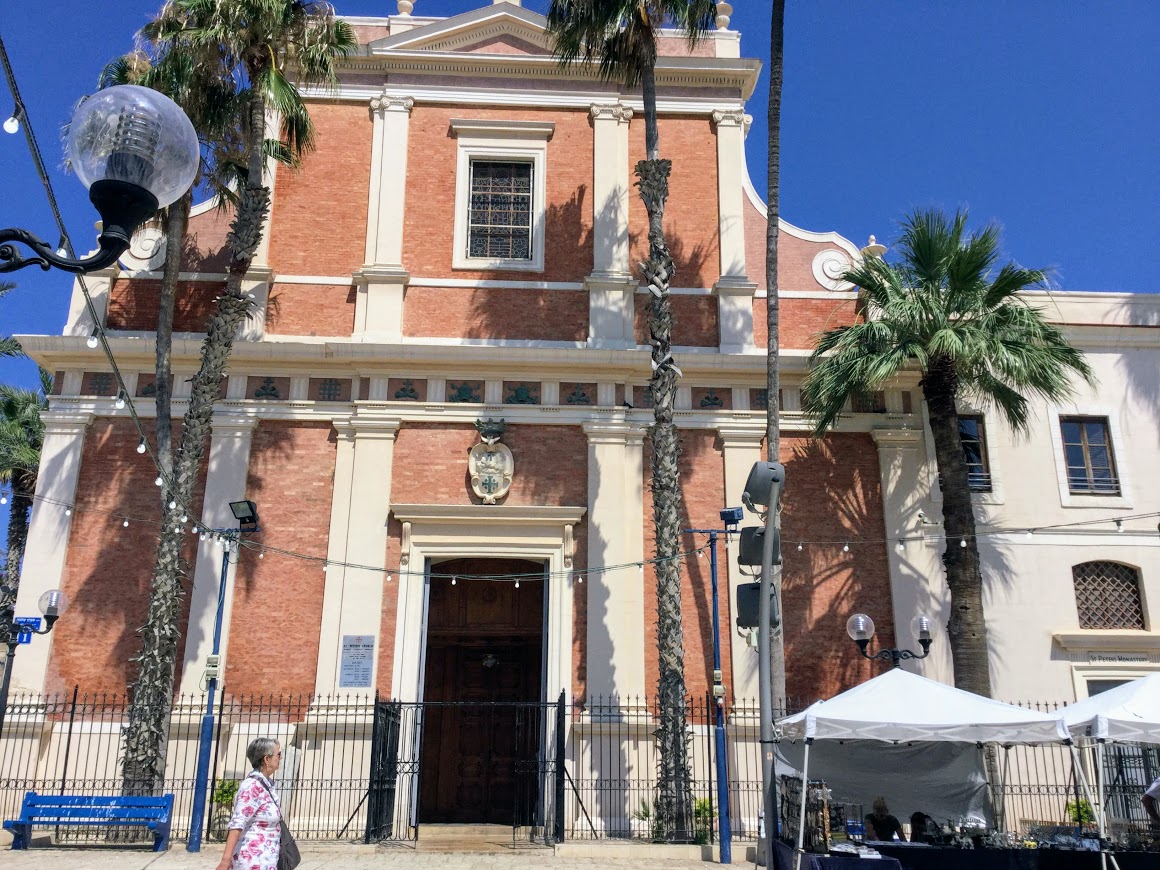
Walk further up until you see St. Peter’s Church.
Old Jaffa is sometimes not given full credit for its’ significance to Christianity. Jerusalem, Bethlehem and Nazareth take precedence hence leaving Old Jaffa sometimes neglected. There are several significant Christian holy sites in Old Jaffa – St. Peter’s Church is one of them. It is believed that it is here where the practice of converting non-Christians began. Saint Peter, one of Jesus’s 12 apostles is said to have performed numerous miracles in Jaffa and was the first to begin preaching the gospel to non-Christians.
St. Peter’s Church was first built in 1654 but like so many other sites in Old Jaffa, it was destroyed and re-built and today we have the latest version which is of the Baroque style and dates back to 1894.
A room within the church supposedly housed Napoleon.
St. Peter’s is an active church holding several masses a day in multiple languages.

8. kedumim square
After you exit the Church to your right will be the Kedumim Square.
All the alleyways leading off the Square are named after the 12 Zodiac signs. Legend has it that if you run up and down the alleyway named after your Zodiac sign three times and make a wish – the wish comes true. Another one of multiple legends and myths related to Old Jaffa!
The Zodiac fountain in the square – again according to legend, if you toss a coin in your wish will come true. Findings from an excavation here showed the existence of a ‘magical’ fountain !
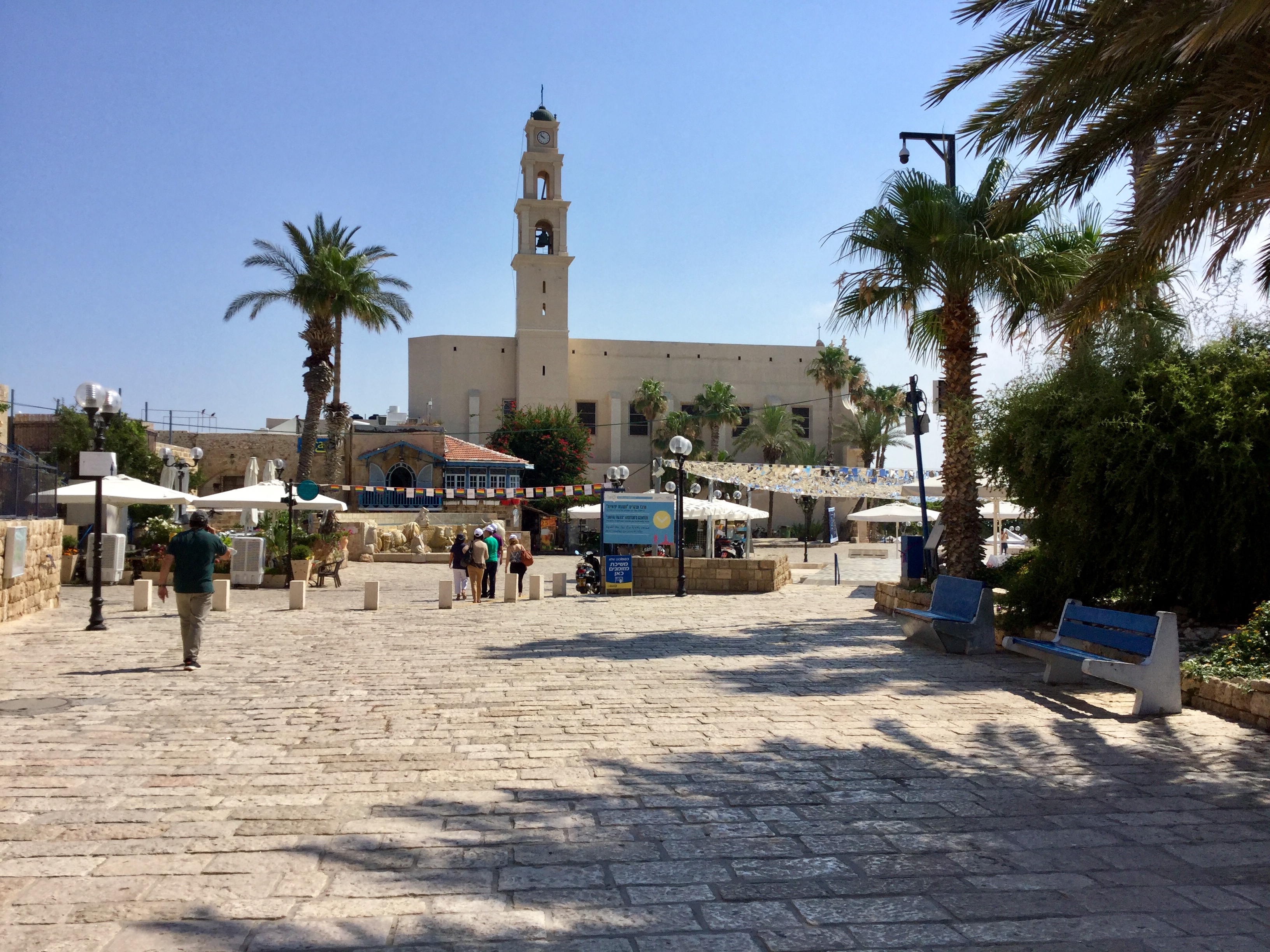
9. Libyan synagogue, Khan & ilana goor
At the South entrance to Kedumim Square, after crossing the square, turn left into Pisces Alleyway – Simtat Mazal Dagim. On your right you will see the old synagogue that was reestablished for Libyan Jews who started settling in Jaffa in 1948. The synagogue dates back about 270 years when it housed a hostel (khan) a mikveh (the ritual bath) and the synagogue. Today it is used for events and the top floor is part of Ilana Goor’s museum.
10. suspended orange tree
Our next stop is the Suspended Orange Tree. Continue walking all the way down Mazal Dagim, at the end turn right into Mazal Gdi – Capricorn Alleyway until you hit Hatsorfim Street. Turn left and you come to Ran Morin’s Suspended Orange Tree. Symbolic of the Jewish people over the centuries being uprooted and yet still putting down roots wherever they find themselves. The walk to get to the orange tree is lovely and you pass by some worthwhile galleries and shops to go into.
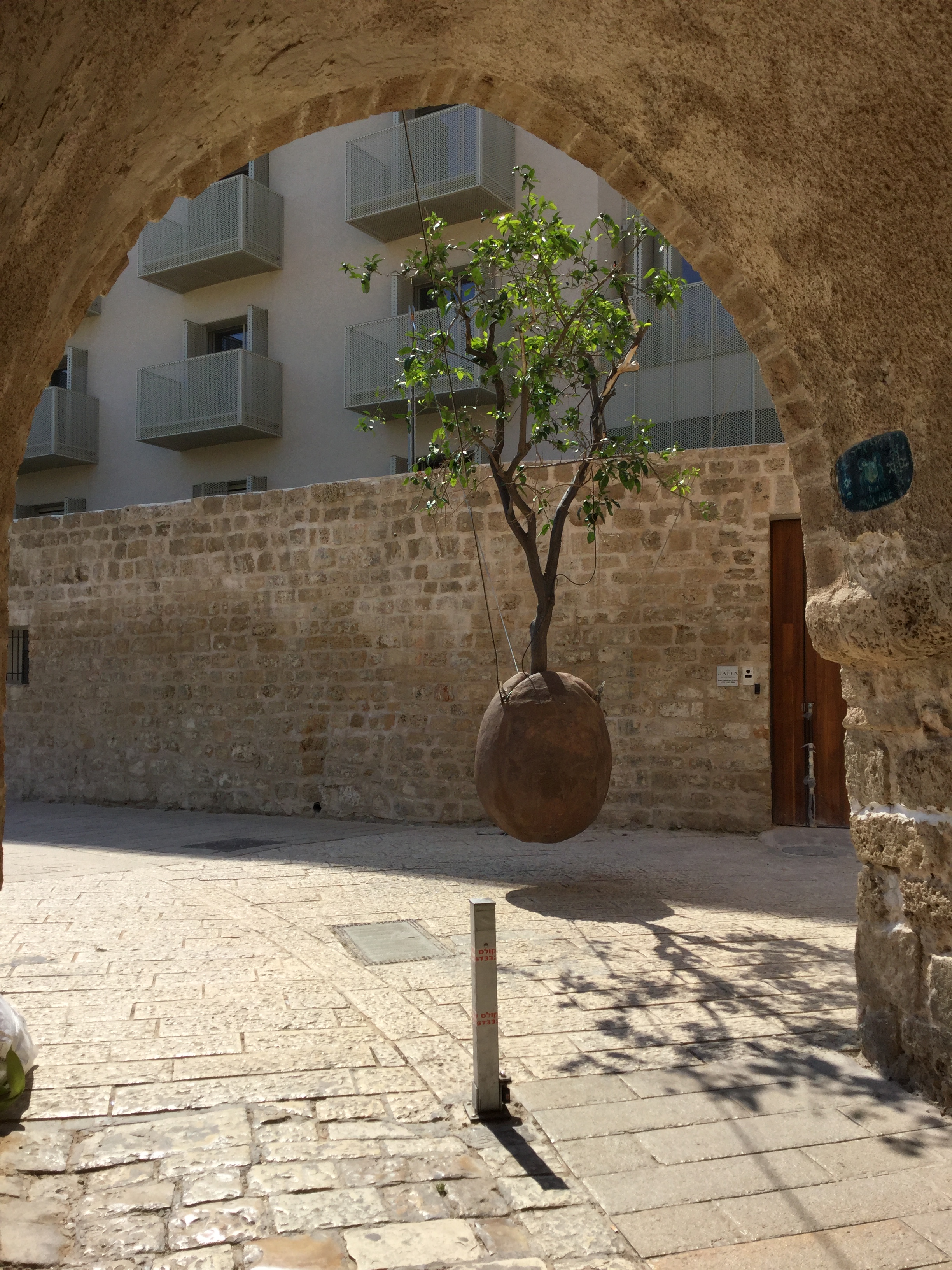
11. ramses gate
From the Orange Tree, walk back into Simtat Gdi and then cross over the small parking lot into the park. On your left hand side you will see the Ramses Gate. This is not the real thing but a reconstruction. Remnants of the original gate from about 3500 yeas ago are housed in the Museum in Kdumim Square. The writing on the gate is Chartumim writing which was used by the Egyptians and hence we know they were here too. From here take the right fork in the pathway and climb up to the top of the park to reach Gan Abraham.
12. Gan Abraham – The Statue of Faith
Great view from the top of Gan Abraham. Take note of the sculpture at the top – The Statue of Faith. It depicts three famous stories from the Bible:- the sacrifice of Isaac, Jacob’s dream and the conquest of Jericho.
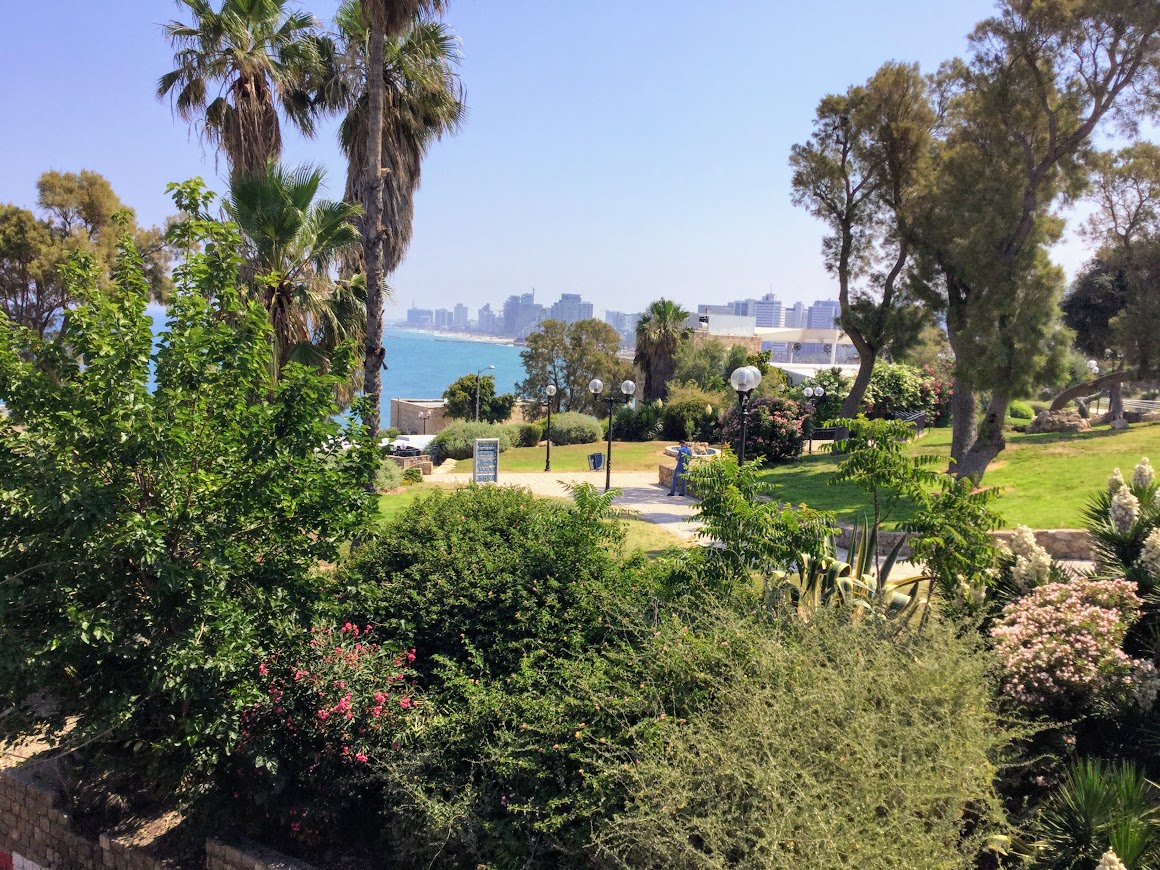
13. The wishing bridge
And here at The Wishing Bridge we again meet Astrology. The 12 Zodiac signs are the theme of this bridge. Cross over the bridge, walk down to Kedumim Square and walk to the end of St. Peter’s Church (the eastern side closest to Tel-Aviv) to start your descent to the Port via Nativ Hamazalot.
14. nativ hamazalot – zodiac alleyway
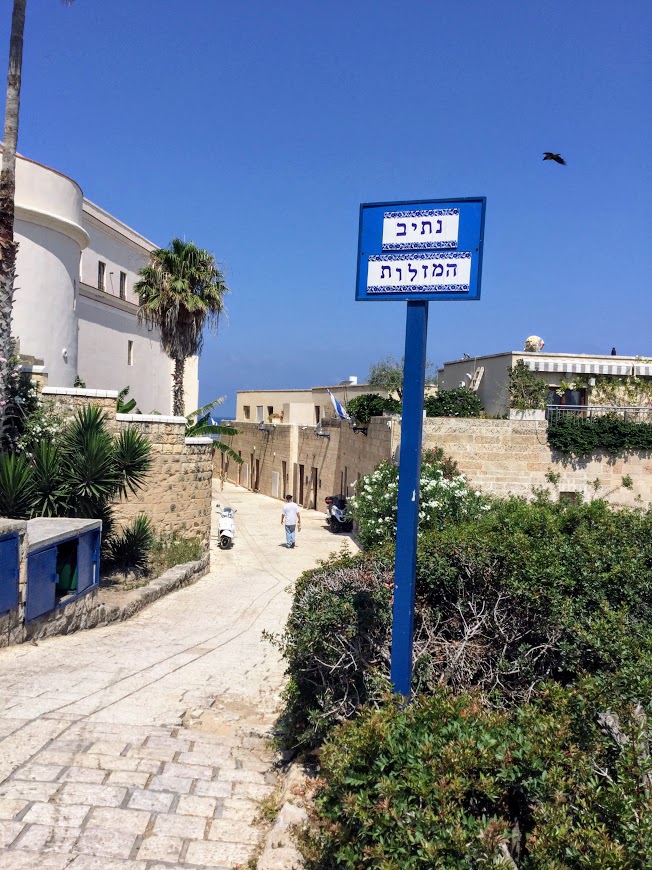
This is The Zodiac Alleyway. Walk all the way down and you get to the Old Jaffa Port. Down this Alleyway you can see a Greek Orthodox Monastery and Casa Nova Pilgrims Hostel which served as the name says as a Pilgrims Hostel. Stop and browse around some of the galleries en route to the Port.
On the way down have a look at Number 16. This is where Avi Feiler used to live – Tel Aviv’s Robin Hood. In the 1960’s together with two others he was caught and tried for robbing diamonds from the safes at The Basel Hotel in Tel-Aviv. At the time the Basel Hotel was hosting, for the first time, a Diamond Conference. Avi Feiler was 20 years old . He stole the diamonds and then handed them out to needy people. At his trial he came dressed up as Robin Hood. He was sentenced to a year and a half in jail and some say that his relatively light sentence was due to his Robin Hood dress up and actions! In time he became a well known reputed Israeli and International artist exhibiting all over the world. Some of his work has also been exhibited at The Leonardo Hotel what used to be known as The Basel Hotel!
16. old Jaffa port -the namal
The Jaffa Port is a natural harbor with lots of rocks and shallow waters forcing big ships to anchor outside. Until the Haifa Port was built in 1933 Jaffa Port was the main commercial port. In 1965 when the Ashdod Port was built Jaffa Port ceased to function as a commercial port. Today it’s main attractions are the restaurants and the Nalaga’at Center.
The Nalaga’at Center is a unique cultural center focused on creating a cultural stage for the blind and deaf and for the visually and hearing impaired, with the idea of touching everyone. There is a theater whose cast are deaf, blind and visually and hearing impaired. The audience are brought into their world. Very special and highly recommended. They also have a restaurant, Blackout, set in total darkness. The waiters are all either blind or visually impaired. You need to book well in advance for the restaurant!
Another option is to eat at Hazaken Vehayam – an Arab authentic restaurant where you don’t need to reserve in advance.
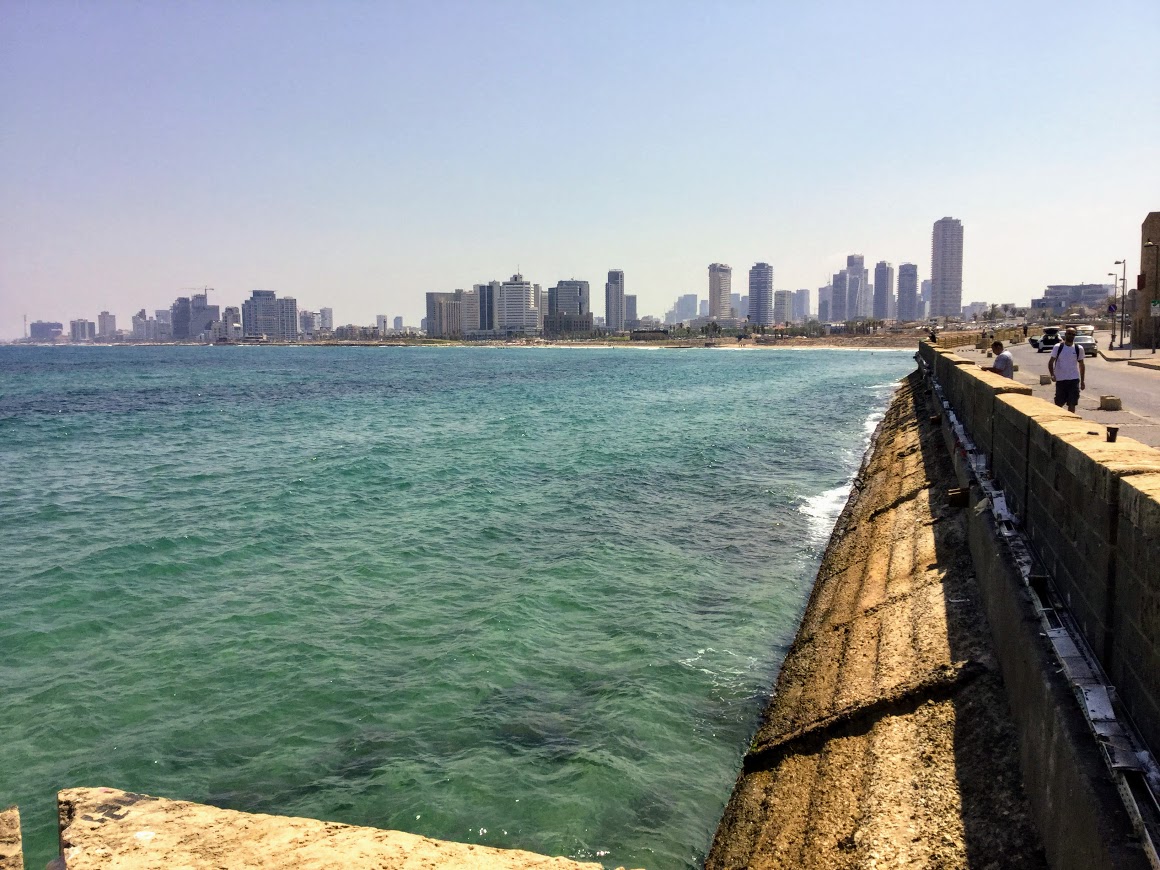
Once done, return to your starting point, The Clock Square, by walking along Retzif HaAliya Hashniya Street, which is a great walk back with stunning views of the sea and Tel-Aviv.
The walk is about 3.5 km long.
All the photos are mine taken with my iPhone and iPad.
tips
* In July and August there are loads of outdoor activities in Old Jaffa
* Comfortable walking shoes, water, hat and sunscreen
glossary
* Pita – flat unleavened bread
* Za’atar – Middle Eastern spice mixture
* Nalaga’at – please touch
* Hazaken Vehayam – The Old Man & The Sea
